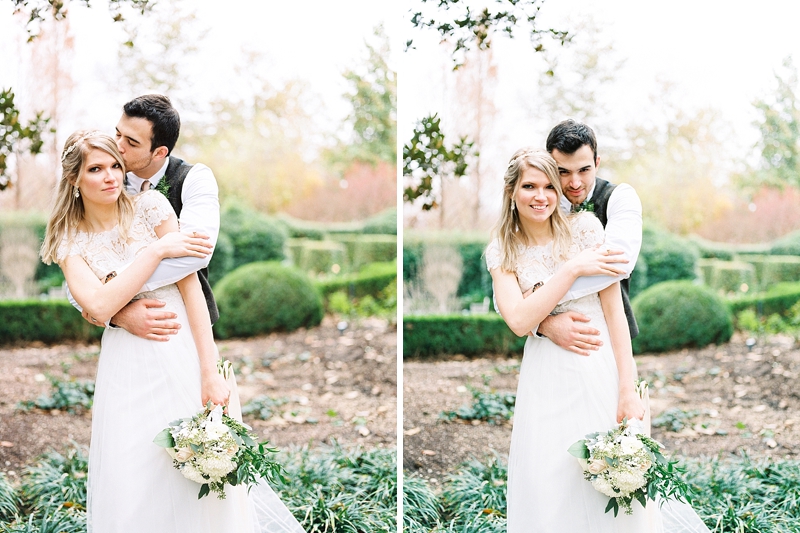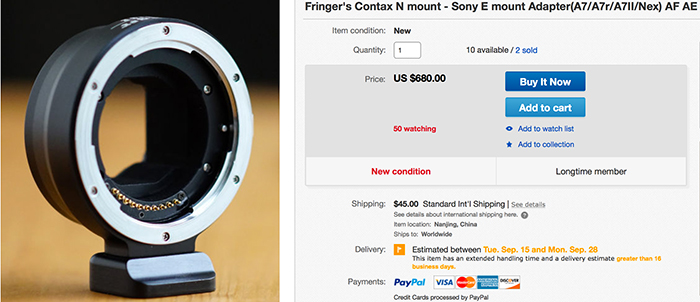


But, to retain that extra stability, I like to frame my shot, focus, and get that mirror up so it doesn't create any shake. When I need lots of light, I go to a slow-shutter speed and mount the Contax 645 on a tripod. I love being able to have the mirror-up function on a camera. However, there are a few that I make use of, and those I will speak on. That's because I probably don't need or use them. I know there's a lot of features that I'm not going to delve into here. It may sound like a silly thing to derive pleasure from, but it just sounds and feels nice. One thing I love about using the Contax 645 is the sound of the shutter. Its weight is similar to other options you'll find in the medium format camera world, so that's pretty average. To learn a little more about those, check out the comparison I did with the Maxwell Screen on a Pentax 67.

And, for those that may need a little extra clarity, there's the Maxwell Precision Optics Screens that you can have installed. I've had really good success with manually focusing the Contax 645.
#Mamiya 645 vs contax 645 manual#
I don't find it to be quite as clear as my Pentax 645s or quite as clear as the Hasselblad H2.īut, that doesn't make it unusable for manual focusing. It's not incredibly bright and clear, but it's not too bad either. The Contax 645's viewfinder is "alright". See my lest post for why).Now, here is where manual focusing can come in very handy, which leads us to our next topic. The second (Kodak Portra 160 NC) was developed and scanned by Richard Photo Lab in LA (I'm scared to scan color. The first roll is a generic B/W 100 roll developed Walmart and scanned by me. All are with 80mm, mostly at 1.9 with a few at 2.8. Still having issues underexposing but i'm getting better. The only one that's not a keeper is the last one, and that was due to my lens getting stuck (I thought it was sand, but I sent it in and they said it was an issue with the gears.), so I was focussing by moving the whole camera. Here are my first two rolls (the first was finished at an event so I didn't include that). My hit rate has gone from 28% to 86%!! Yippee! For some reason even at 1.9 this baby is much easier to focus than both my Hassy and my Nikon D700. Flash sync is only 1/60 and slower (not that I see myself using flash with film anytime soon).Build quality (the later AF and AFD versions are made much better it seems), pretty much on par with the Canon Rebel series.only 1/1000 top shutter speed (the AF version and the Contax 645 both have a top shutter speed of 1/4000).Not all of the lens are top notch (the 35, 45 especially).Also for printing purposes it just makes more sense. I almost never shoot in portrait mode with my D700 but I find myself doing it quite often with the Mamiya. First of all its much easier to compose than a traditional 4圆 especially in portrait mode. The 645 format (pretty much the same as a 8x10).
#Mamiya 645 vs contax 645 series#
Has a focal plane shutter, so will work with all of Hassy's F series lens (yummy) and a few others.Very easy to focus (more on that later).A huge step downwards in that department from the Hasselblad. The build quality leaves much to desire, reminding one of Canon's Rebel series. The Mamiya has a 80mm 1.9 which in 35mm terms is a 50mm 1.1875 and pretty sharp wide open. Drool.Ī while ago I wrote about my "normal" woes: Finding a fast high quality normal lens was causing ulcers of the mind. The Mamiya 7 is purported to have two of the best lens ever produced, the 80mm f/4 and the 43mm 4.5. Later on they also made two rangefinders, a Mamiya 6 (6圆) and Mamiya 7 (6x7). Has a metering prism (and even autoexposure!) and a power winder. Later on they also made a autofocus version and kept on updating it until its current incarnation as the Phase One DF. The 645 was (for many) the best combination of large negative and portability. The camera though was h u g e, so working in the field required either a bodybuilder or insanity. The 67 was probably the most common studio camera, giving a huge 6x7 negative. The "rb" part stands for "rotating back" so you can just turn the back instead of the whole camera to switch from landscape to portrait or vice versa. Mamiya also made a twin lens camera (6圆) and a 6x7 slr called a rb67 (later the rz67). 6 cm x 4.5 cm, which is approximately 3 times the size of a 35mm negative. They've been around for quite a while and were for a while the most common name in the medium format camera world. Mamiya is a very respected name in the medium format camera world (recently they merged with Phase One to produce the most advanced and modular digital medium format system available). In my last post I discussed my decision to sell my Hassy and pick up a new film camera.


 0 kommentar(er)
0 kommentar(er)
